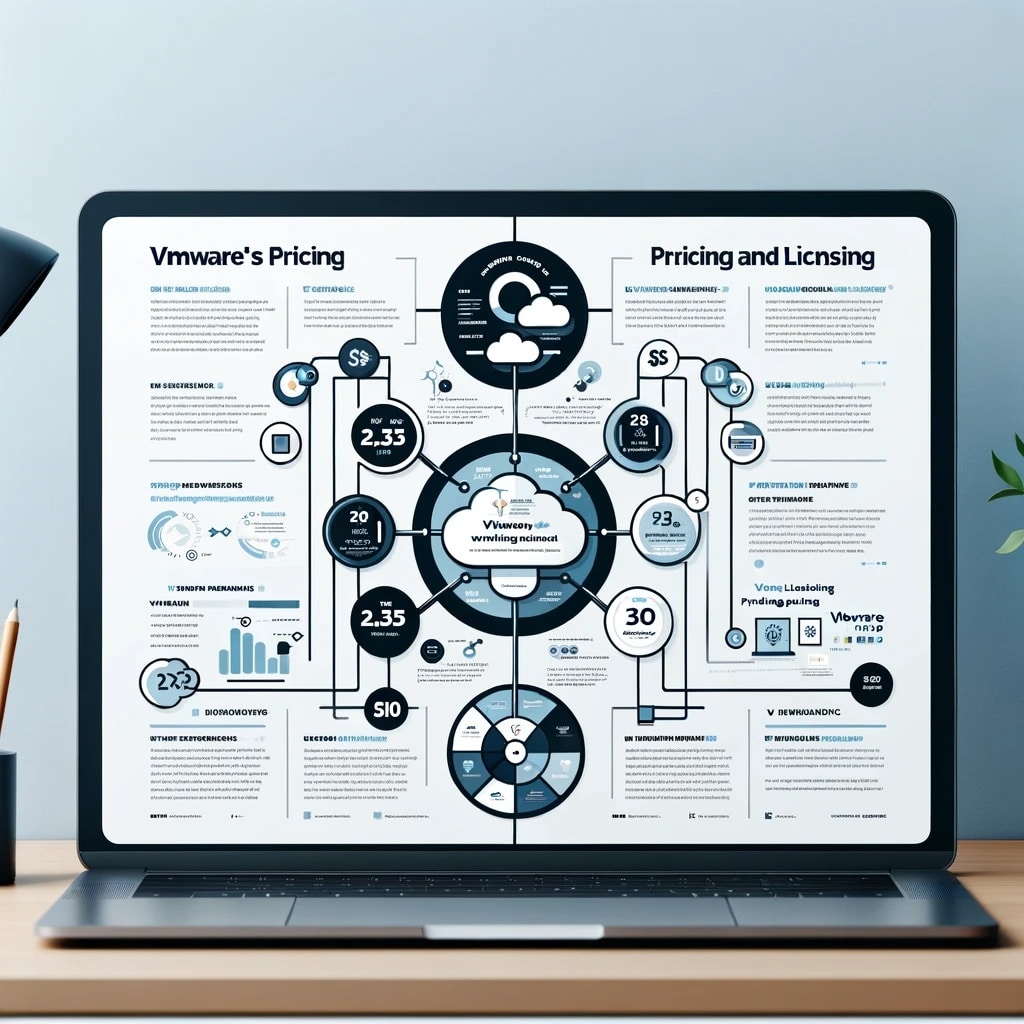VMware’s Licensing Models
VMware emerges as a pivotal player, offering a suite of virtualization and cloud computing solutions. For IT professionals, comprehending VMware’s licensing models is not just a necessity but a strategic advantage. This article provides an in-depth exploration of VMware’s pricing and licensing, aiming to demystify the complexities and aid in making informed decisions.
Breaking Down VMware’s Pricing Structure
VMware’s diverse pricing structure caters to various business needs through its tiered offerings: Standard, Enterprise, and Enterprise Plus. The Standard package, priced around $995 per CPU, is tailored for small to medium-sized businesses, offering basic virtualization capabilities with no frills. The Enterprise package steps up with more advanced features, suitable for larger organizations requiring high availability and resource management capabilities, typically priced higher than Standard. The top-tier Enterprise Plus package, reaching up to $3,495 per CPU, includes full-fledged features like distributed resource scheduler (DRS), storage DRS, and network I/O control. It is designed for large-scale, complex infrastructures demanding the utmost in terms of performance and scalability. Note that these prices are subject to market dynamics and should be verified with VMware’s current pricing.
Types of VMware Licenses: What IT Pros Need to Know
VMware offers several license types to accommodate different business models and infrastructure scales. The CPU-based licenses are straightforward, charging per CPU socket in the server and are ideal for small to mid-sized operations. On the other hand, cloud-based licenses offer more scalability and are suited for dynamic cloud environments or large enterprises with fluctuating needs. VMware also provides a vSAN license for virtual storage solutions, crucial for businesses focusing on software-defined storage solutions. These licensing models reflect VMware’s commitment to providing flexible, scalable solutions for a range of business requirements.

Comparing VMware’s Perpetual vs. Subscription Licensing
The choice between perpetual and subscription licensing models is pivotal. Perpetual licenses, involving a one-time purchase, grant indefinite usage rights, appealing for long-term stability and predictable budgeting. Conversely, subscription licenses require ongoing payments but offer the advantage of flexibility, easier scalability, and access to continuous software updates. Businesses must weigh these options, considering their operational tempo and future growth trajectories.
VMware’s License Management: Tools and Tips
Efficient license management is a cornerstone of maximizing the return on VMware investments. VMware provides comprehensive tools for tracking and optimizing license utilization, crucial for maintaining compliance and operational efficiency. Regular audits, aligning licenses with actual usage, and a deep understanding of the specific terms and conditions associated with each license are indispensable practices for any IT team.
VMware’s Support and Maintenance Fees
Support and maintenance represent a significant aspect of VMware’s total cost of ownership. These costs, generally calculated as a percentage of the license cost (typically between 18% and 25%), vary based on the chosen support level. VMware offers a spectrum of support services, from basic troubleshooting to dedicated 24/7 assistance. IT departments must judiciously choose the level of support that aligns with their operational requirements and budget constraints.
Maximizing Value in VMware Licensing
Navigating the intricate landscape of VMware’s pricing and licensing models is a complex yet crucial task for IT professionals. A nuanced understanding of these models not only ensures compliance and cost-effectiveness but also positions IT teams to leverage VMware’s solutions to their fullest potential. Staying current with VMware’s licensing updates and actively managing licenses is fundamental in today’s ever-evolving IT environment, ensuring that organizations extract maximum value from their VMware investments.

I stumbled upon this article while researching VMware’s pricing and licensing for our organization. It’s been an absolute lifesaver! The breakdown of the pricing tiers and the comparison between perpetual and subscription licensing models answered many of my questions. Thank you!